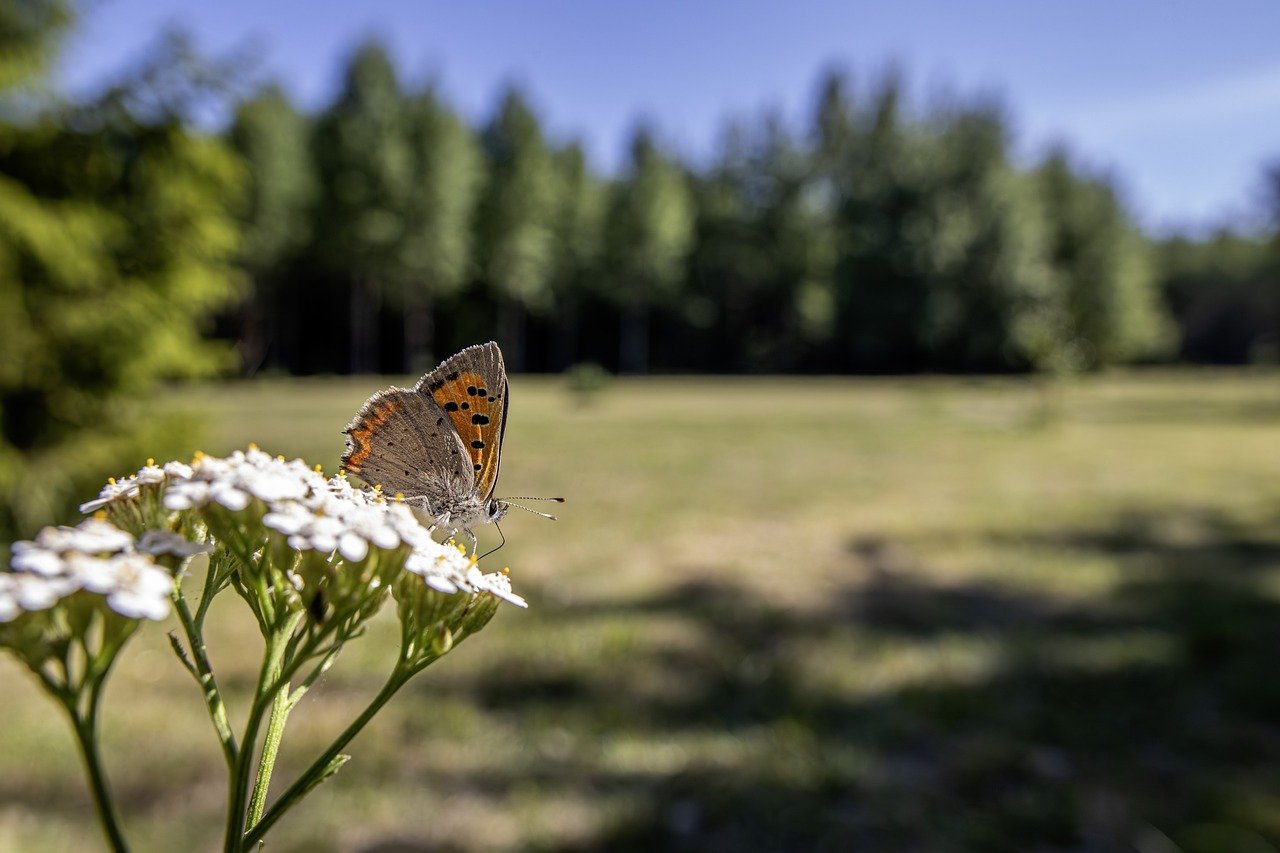The Common Copper (Lycaena phlaeas), also known as the Small Copper, is a small and brightly colored butterfly found across Europe, Asia, and North America. It’s one of the most widely distributed and recognizable species of the family Lycaenidae, known for its vibrant coppery wings.
Key Characteristics:
- Appearance:
- Wingspan: The wingspan ranges between 25-35 mm, making it a relatively small butterfly.
- Coloration:
- The upper side of the forewings is a vibrant copper-orange with dark brown or black spots and a dark brown outer margin.
- The hindwings are darker, with a copper-orange edge, and marked with a few darker spots.
- The underside of the wings is paler, with the forewings showing lighter orange with dark spots, while the hindwings are brownish-grey with small black spots.
- Body: The body is dark, with fine hairs, and the antennae have black and white banding.
- Behavior:
- Flight Period: The Common Copper can be seen flying from spring through autumn, depending on the location. It often has several generations per year (usually two or three), especially in warmer climates.
- Territorial: Males are known to be territorial and will aggressively defend small patches of ground against rival males or other insects.
- Sun-loving: This species is fond of basking in the sun, often seen resting with its wings open on stones, bare ground, or low vegetation.
- Habitat:
- Range: The Common Copper is widespread throughout Europe, Asia, and parts of North America. It can thrive in a variety of habitats, from meadows and grasslands to wastelands and even gardens.
- Preferred Environment: It prefers open areas such as grassy fields, heathlands, and roadside verges, especially those rich in the butterfly’s food plants.
- Diet:
- Larvae: The caterpillars primarily feed on plants from the dock and sorrel family, particularly common sorrel (Rumex acetosa) and sheep’s sorrel (Rumex acetosella).
- Adults: As adults, Common Coppers feed on nectar from a variety of wildflowers, including thistles, buttercups, and dandelions.
- Lifecycle:
- Eggs: The female lays single eggs on the leaves of the host plants, where the caterpillar hatches and begins to feed.
- Caterpillars: The caterpillars are green with a yellowish stripe down the back, making them well camouflaged against the leaves of their host plants.
- Pupation: After the larval stage, the caterpillar pupates, and the butterfly emerges after a few weeks. In regions with colder climates, the pupae may overwinter.
- Conservation Status:
- The Common Copper is not considered threatened and is abundant in many parts of its range. However, like many butterfly species, it can be vulnerable to habitat loss and changes in land use, such as intensive farming or urban development.
Conclusion:
The Common Copper (Lycaena phlaeas) is a resilient and widespread butterfly known for its brilliant copper-colored wings. Its adaptability to different habitats and its striking appearance make it a favorite among butterfly enthusiasts. Despite its small size, it’s a butterfly that plays an important role in maintaining the ecological balance by pollinating plants and serving as prey for birds and other animals.
Visited 75 times, 19 visit(s) today
Views: 119
Subscribe to the newsletter:
